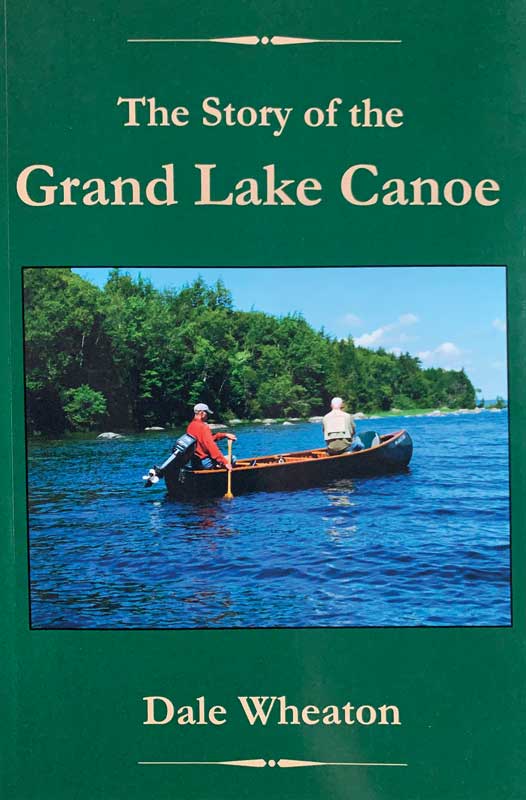
The Story of the Grand Lake Canoe
by Dale Wheaton, St. Croix Historical Society, 2024
Some Maine watercraft are inextricably linked to particular towns through the names by which they are known. Think Friendship sloops, developed for lobstering under sail; Rangeley boats, originally double-ended but now with a transom for outboards, and used for pleasure fishing on the lakes of that region; and, most notably here, the Grand Lake canoes. These square-sterned canoes, about 20 feet long with relatively high freeboard, have evolved to handle well under both paddle and outboard on the frequently choppy waters of the Downeast Lakes region surrounding the tiny village of Grand Lake Stream.
The St. Croix Historical Society, based in Calais, Maine, has done all who love Maine history and traditional watercraft a great service by publishing in 2024 The Story of the Grand Lake Canoe by Dale Wheaton, who sadly passed away the year of publication. All proceeds from sale of the book go to the Historical Society.
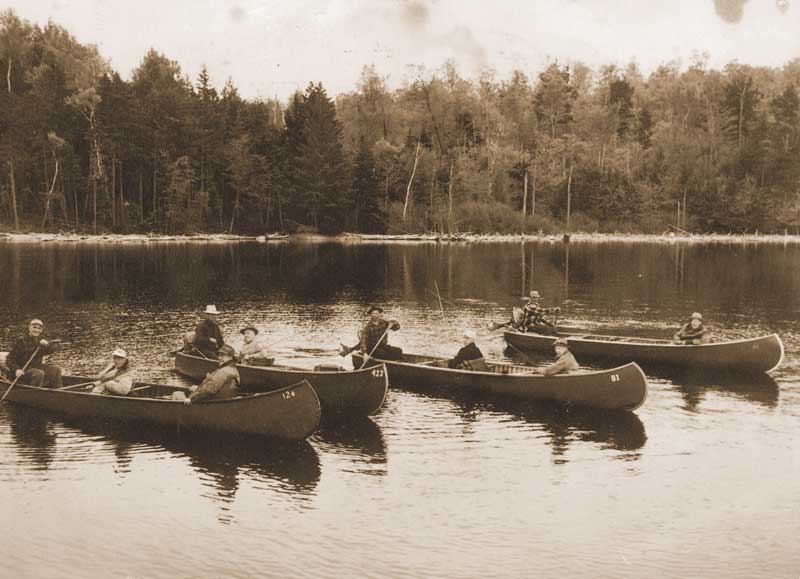
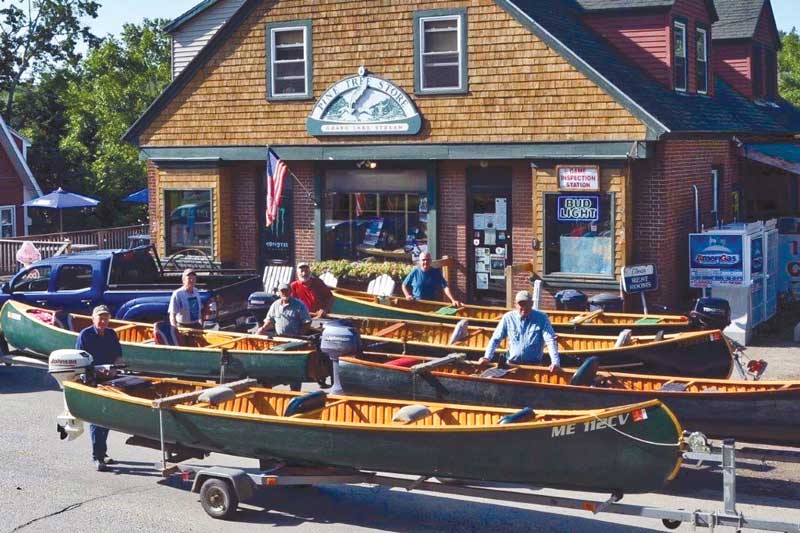
Coming from one of the local families of canoe builders, Wheaton lovingly chronicles the history of a beautiful region, stories of guides and canoe builders, and explains how each builder used his own and guides’ experiences to optimize hull shapes. Photographs, some quite old, and extensive footnotes add to the wealth of information.
Grand Lake Stream lies about 30 miles inland from the sea, not far from the Canadian border in a region where the Great North Woods sweep downward toward the Gulf of Maine. The area’s abundance of hemlocks offered large amounts of bark for the tannin to support in Grand Lake Stream one of the world’s largest leather-tanning factories in the late 19th century. The village grew up along the stream of the same name to house the workforce for harvesting the trees and running the factory.
What Indigenous people had long known, visitors discovered even before the Civil War: The fishing from Passamaquoddy birchbark canoes was spectacular. Guides transported and taught their clients, the so-called “sports,” arriving from afar. Despite the tannery’s decades of noise and pollution, fishing held up. When the tannery closed in 1898, sporting camps for anglers and hunters joined the guides as the basis of an economy that still thrives today. Wheaton was himself a sporting camp owner, with his wife.
Canoes are essential in that region. Wood-and-canvas construction replaced building with birch bark in Maine as the 19th century ended, and the new century brought the outboard motor. Guides still needed to paddle in small streams and close inshore, but the speed of outboards was advantageous for traveling longer distances and quicker access to the best fishing spots. Several local families, Wheaton’s relatives included, produced multiple generations of craftsmen dedicated to providing guides and sports with canoes that became known as Grand Lakers. At the height of building these masterpieces of design and craftsmanship, several builders operated completely independently of each other within the village’s confines. The Story of the Grand Lake Canoe is a marvelous tribute to this Yankee individualism, the canoes it produced, and the Downeast Lakes region.
—Ben Emory
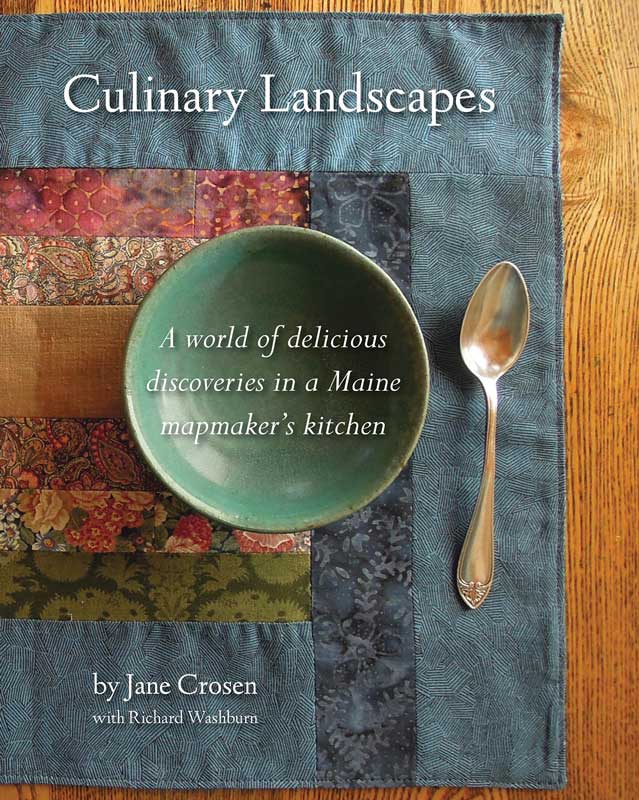
Culinary Landscapes: A World of Delicious Discoveries in a Maine Mapmaker’s Kitchen
by Jane Crosen, Maine Mapmaker/Waterbird Press, 2025
Chain of Lakes lies in the easternmost county in the United States. Shaped by melting glaciers, the interlocking waterbodies—First, Second and Third Chain lakes—are surrounded by once logged, sparsely inhabited forests in Washington County’s unincorporated Township 26.
This remote place, where logs were driven down Chain Lake Stream during the timbering era, is a fitting setting for Maine mapmaker Jane Crosen’s second cookbook Culinary Landscapes: A World of Delicious Discoveries in a Maine Mapmaker’s Kitchen. Solo or joined by her husband/co-culinary adventurer Richard Washburn, she wrote and assembled much of Culinary Landscapes at their seasonal camp on First Chain Lake. In winter, home is the Hancock County town of Penobscot, which the Bagaduce River flows through.
Crosen grew up in the southern Maine town of Cumberland. She has always lived near salt or freshwater bodies. In her 20s, a three-year stay at Scotland’s spiritual community, Findhorn, on the North Sea, nurtured her passion for locally grown and sourced food. Crosen’s knowledge of typography and calligraphy sprang from working as a typesetter. Her fascination with maps and mapmaking ability evolved while serving as an editor at Yarmouth-based mapping company, DeLorme Publishing. Her design and editorial skills were further enhanced at WoodenBoat magazine in Brooklin.
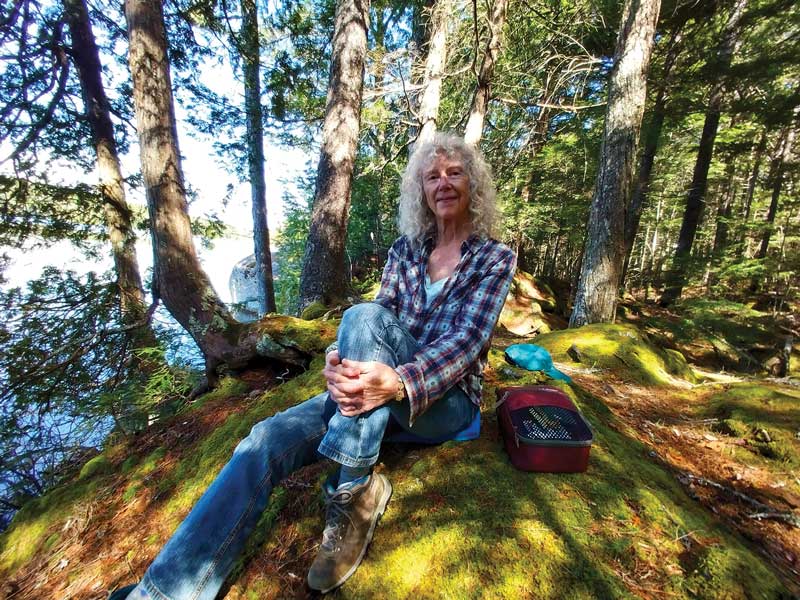
These facets of Crosen’s life all are reflected in Culinary Landscapes, from her careful choice of Perpetua and Goudy Old Style fonts and finely crafted writing to her color photos and pen-and-ink illustrations throughout the airy cookbook. They also characterize her 2009 cookbook Maine Mapmaker’s Kitchen and her handsome, expanded editions of George N. Colby’s 1881 atlases of Hancock and Washington counties.
While exploring Maine and beyond, Crosen either knows of or seeks food that’s in season in the wild or harvested by farmers, fishermen, and other local purveyors. At First Chain Lake, the modest cabin may lack electricity or running water, but it is rich in the author’s idea of amenities. The small kitchen is stocked with mint, marjoram, sage, thyme, dill, and other herbs—grown in her and Washburn’s big garden in Penobscot—and homemade spice rubs for cooking maybe chicken thighs and foraged chanterelles or Persian-spiced lambchops on a two-burner Coleman camp stove. Other cooking platforms include an old Avalon Regency woodstove and Smoky Joe charcoal grill.
Weather permitting, Crosen eats on the camp’s screened porch—another luxury—where the table is set with her richly patterned “landscape” placemats. She composes scenes from strips of old garments and scraps from sewing projects.
Depending on the day ahead, Crosen might grab a quick bite, say her scratch English muffins with blood orange marmalade. A leisure breakfast might be multigrain pancakes with strawberry-rhubarb sauce.
The mapmaker loves to eat well but doesn’t want to miss seeing May flowers in bloom and other outdoor adventures. Through Culinary Landscapes, she strives to make that possible for others too.
—Letitia Baldwin
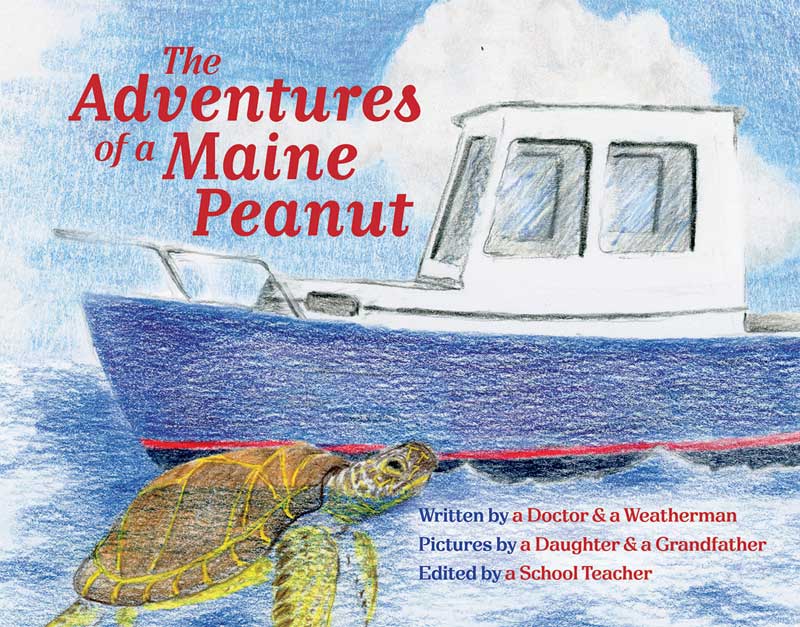
The Adventures of a Maine Peanut
by a Doctor and a Weatherman, pictures by a Daughter and a Grandfather, and edited by a School Teacher; Samir Haydar and Todd Gutner, 2024
A family outing interrupted by a strong summer gale, a parted mooring line and cherished boat gone missing, encounters at sea with a variety of marine life, and a fortuitous rescue by the skipper of a tuna boat—what more could you ask for in a good Maine sea story?
Not much, it turns out. The Adventures of a Maine Peanut is a lively children’s tale that’s recounted by the gulls of Casco Bay. After all, they were the only ones that could have witnessed what happened between the time “Peanut the 24-foot Eastern” with a funny name broke free from a mooring in Kettle Cove, near Cape Elizabeth, and was found floating without a scratch four days and some 50 miles later off Ogunquit.
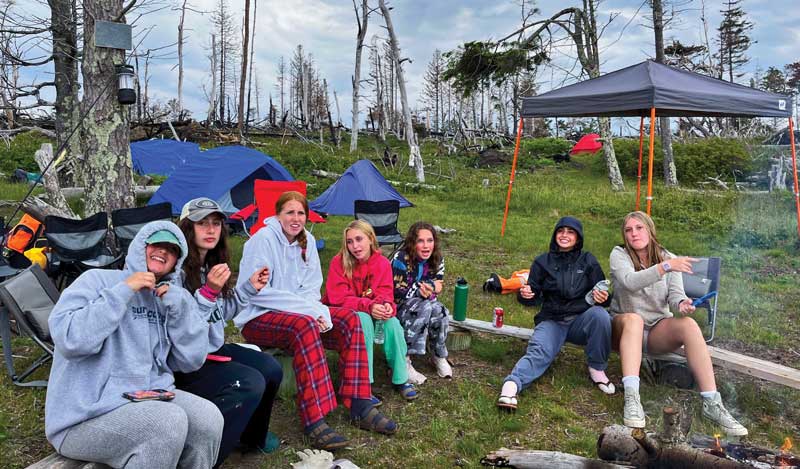
At home, Peanut lives alongside the friendly sailboat Mama Cita, the Albin Mise en Place, Maiden Maine and Sweet Pea, a pair of Eastern-like hulls, and the small lobsterboat Gail Louise. During its adventure, Peanut misses those friends but encounters the likes of Franny the turtle, curious seals named Steve and Christopher, Mr. White the shark, and a pod of porpoises named Ben, Teddy, Berm, Mike, Dickie, and Shaw.
It’s a whimsical, almost true story, written by Samir Haydar, a Portland doctor, and his friend, Todd Gutner, a television weatherman, after an annual family Father’s Day outing to Richmond Island off Portland was cut short by a storm, and the Haydars’ Eastern 24 went on an unexpected walkabout at sea.
The book is wonderfully illustrated by Samir’s youngest child, Franny, and amateur nature illustrator and photographer Jim Newton—another Richmond Island devotee. It was edited by Todd’s wife, Rachel, a Falmouth teacher, so like the annual outing, the book is very much a family affair.
Widely available in Maine bookstores and online, it’s a book that will keep the kids entertained on a summer’s night on the coast, up to camp, or in a woodsy cabin in the mountains. Wherever you choose to read it, you are all bound to get a kick out of Peanut’s nautical adventure.
—Mark Pillsbury






